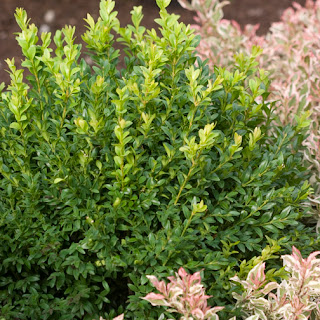Madonna was caught on camera emphatically stating that she “loathes” hydrangeas. And while some have criticized her for her harsh words, I don’t begrudge her. After all, she was only expressing a view shared by millions of people. Yes, millions for people loathe hydrangea. So how can it be that a beautiful flowering shrub evokes such disdain? It’s simple, really. For years, Martha Stewart and her East Coast friends have shown us an endless stream of outrageously beautiful hydrangeas, covered with big, colorful blooms - but they failed to tell us something important. We need to move to Cape Cod to get them to flower. That’s right, you have to move to the coast to get hydrangeas to bloom like they do in the magazines! That’s because these bigleaf hydrangeas, Hydrangea macrophylla, have evolved in the mild maritime climate of coastal Japan. These plants detest the harsh continental climate of the Midwest with its wacky spring weather that ping-pongs between 85 and 20 degrees; their flower buds swell up and are zapped like flies in an electric bug killer. The dirty little secret is that we don’t live in Japan, or Cape Cod, or the Hamptons, and our climate is perfectly suited for killing hydrangea flower buds. This is why Madonna is so pissed off! She’s sick and tired of being teased with the promise of beautiful, bodacious blooms only to be fooled, faked, and frustrated by season after season of flowerless foliage.

Some would argue that the new reblooming hydrangeas have solved the problem. Sure, the industry has selected and hybridized remontant (reblooming) varieties such as Endless Summer®, Forever & Ever®, Mini Penny® and the remarkable Let’s Dance® series, but have we really solved the problem? Are people suddenly happy with their hydrangeas? Has Madonna changed her tune? No. Not really, because while all of these hydrangeas rebloom to some degree or another, they typically don’t live up to expectations.
The problem remains that our crazy spring weather kills the old-wood flower buds (or stems) of these new varieties just as well as it killed the buds (and stems) of the old varieties. Unless we have an unusually mild spring or lots of snow-cover, the flower buds are killed and you don’t get the reblooming flowers until late summer or fall. And this sparse, late season flower display looks nothing like the June blooms they get in Cape Cod. No wonder Madonna loathes hydrangea: she’s from Michigan, not the East Coast!
What Madonna doesn’t know (and Martha never tells us) is that there are other species of hydrangea that are adapted to our crazy climate and that flower reliably every year. My dear Madonna, here are some hydrangeas that will satisfy all your needs and change the way you feel about this shrub:
Limelight Hydrangea (Hydrangea paniculata ‘Limelight’) is hardy from Maine to Mobile, Alabama. It even thrives in Madonna’s hometown of Saginaw, Michigan. The flowers emerge in mid-summer a rich lime-green, lighten as the summer progresses, then turn shades of pink and green in autumn. And just like you, this plant is adored by millions of raving fans. If you want a smaller version of the same plant, try Little Lime™ Hydrangea (Hydrangea paniculata ‘Jane’ ppaf). It has all the same wonderful attributes of ‘Limelight,’ but at about one-third the size.
Madonna, since you sang “Incredible” (and dress the way you do), you are certain to fall in love with a hydrangea called Incrediball® (Hydrangea arborescens ‘Abetwo’).
You’ll love its big, sexy blooms and stiff stems. This improved ‘Annabelle’ hydrangea is rugged, fool-proof and will flower for “Everybody.” You’ll appreciate its artistic flower coloration that starts out bright green, matures to pure white and then ages to a rich kelly-green. The show begins in mid-summer and last through winter as the flowers remain attractive even after the snow flies. This super hardy hydrangea thrives in full sun and is pretty much guaranteed to flower every year.

I think you should also grow Invincibelle® Spirit II Hydrangea (Hydrangea arborescens ‘NCHA2’). This plant is a game changer, just like you. It’s the very first pink-flowered form of the ‘Annabelle’ hydrangea, which in layman’s terms means you’ll get lots of colorful pink blooms, year after year, even in chilly zone 3. A single mature plant can produce well over 100 blooms. If you want even more flowers, just prune off the old ones and watch as every stem flowers a second time! No other hydrangea gives a repeat performance like this one. Seriously, have you ever given an encore like that?

Madonna, I know that you’re a big supporter of breasts and breast cancer research. So you’ll appreciate that Invincibelle Spirit Hydrangea supports an important cause. Each plant sold raises a $1.00 for the Breast Cancer Research Foundation. As part of the national Invincibelle® Spirit Campaign, garden centers have joined the “Celebration” by hosting “Invincibelle Spirit Pink Days” to raise additional funds for breast cancer research. How can you loathe a hydrangea that has generated over $200,000 for the cause? I urge you to join the campaign, visit http://invincibellespirit.net to learn more.
 |
| The only hydrangea that helps find a cure. |
Now I don’t want to preach, but come on, Madonna! From one Michigander to another, please “Don’t Tell Me” you loathe hydrangeas anymore. Get “Into The Groove” and “You’ll See” that if you just “Promise To Try” these hydrangeas they’ll “Open Your Heart.” They’re “True Blue” plants - so give hydrangeas just “One More Chance.”
















































